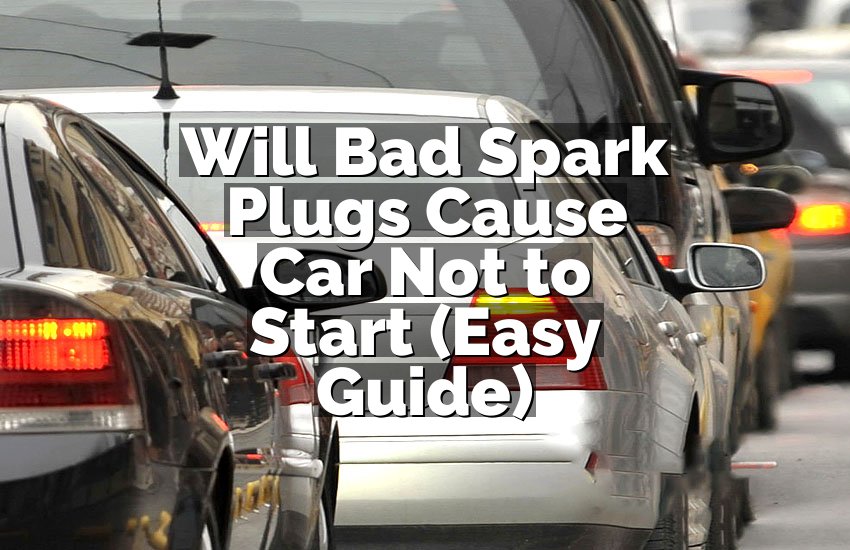You probably never think about it until it happens — you’re driving, maybe singing your favorite song, and suddenly your car feels weird. You stop and see it… a flat tire. Ugh! It’s frustrating, right? But guess what? You can actually change a tire all by yourself! Yes, even if you’ve never done it before.
In this article, I’m going to walk you through everything. You’ll learn exactly how to change a tire in a simple way with easy steps. No special skills needed. Just a little time, a bit of patience, and you’re good to go. Let’s get your hands a little dirty and fix that tire together!
Get Your Tools and Park Safely
Before you even touch the tire, the first thing you need to do is stay safe. Safety is the most important part of changing a tire. You never want to be near moving cars or parked in a dangerous spot. If you get a flat tire while driving, try to slowly pull over to the side of the road. Find a flat, solid space away from traffic. If you’re on a highway, go as far to the right as you can, or even into a parking lot if there’s one nearby.
Next, turn on your hazard lights. This tells other drivers that your car is stopped and something is wrong. It’s a small button on your dashboard, usually with a red triangle.
Now it’s time to use your parking brake. Pull the brake or press the button (depending on your car) to make sure your car does not roll. Even if you are parked on a flat road, always use the parking brake. This keeps your car still while you work.
Once you’re safe, it’s time to grab your tools. Most cars come with a few basic items in the trunk. These include a spare tire, a jack, and a lug wrench. Some also have a small tool to remove the hubcap, if your car has one.
Here’s a quick list of what you need:
- Spare tire (make sure it’s full of air)
- Jack (this lifts your car)
- Lug wrench (looks like a big X or a bar with a socket at the end)
- Flashlight (if it’s dark)
- Gloves (optional, but helpful)
- Wheel wedges or heavy object (to block the wheels so the car doesn’t move)
If your car is missing any of these tools, it’s a good idea to buy them before you ever get a flat tire. You can keep them in your trunk. It’s always better to be prepared than to get stuck somewhere.
Once you have your tools, use the wheel wedges. These go in front of or behind the tires to keep the car from rolling. If your flat tire is in the front, block the back wheels. If your flat is in the back, block the front ones. If you don’t have wedges, use bricks or something heavy.
Now, you’re ready to start working. Take a deep breath. It’s really not hard, and you’re doing a great job already by being safe and prepared!
Loosen the Lug Nuts
Now that your car is safe and your tools are ready, it’s time to look at the flat tire. On the wheel, you’ll see some metal circles. These are called lug nuts. They hold the tire onto the car. To take the tire off, you have to loosen them. But don’t take them off yet!
First, if your car has a hubcap (a plastic or metal cover on the center of the wheel), you need to remove it. Use the flat end of your lug wrench or a screwdriver to gently pop it off. Some hubcaps just snap off easily. Others may need a little wiggling. Put it aside somewhere safe so it doesn’t roll away.
Now, take your lug wrench. It should fit right over the lug nuts. Place it on one of the nuts and turn it counter-clockwise (left). Sometimes the nuts are really tight, especially if they haven’t been moved in a long time. That’s normal. You might have to use your foot to push down on the wrench or use both hands and a lot of strength. Just be careful not to slip and hurt yourself.
If one lug nut doesn’t move, try another one. Then come back to the first one. Try not to get too frustrated. They will loosen! Once each nut starts to move, turn it just a little bit. You don’t want to take them off yet, just loosen them. This is easier while the tire is still touching the ground and not spinning.
After you’ve loosened all the lug nuts on the flat tire, you can move to the next part. You’re doing great. This is the step that usually feels the hardest because it needs muscle, but once the nuts are loose, the rest will feel much easier.
Remember, do not take the lug nuts all the way off yet. Just loosen each one a few turns so they’re easier to remove once the car is lifted. Keep the wrench nearby — you’ll need it again soon.
Lift the Car with the Jack
Now that the lug nuts are loose, it’s time to lift your car. This part might feel a little scary at first, but it’s totally safe if you follow the steps.
Take your jack and look for the jack point on your car. This is a small metal spot under the car near the flat tire. Most cars have special areas made for the jack. You can usually find it just behind the front wheel or just in front of the back wheel. If you’re not sure, check your car manual — it will show you exactly where to place the jack.
Once you find the jack point, slide the jack under the car and line it up with that spot. Make sure it’s sitting flat on the ground. If the ground is soft, like dirt or grass, the jack might sink. If that happens, try to find a flat board or something hard to put under the jack.
Now, start raising the car. Most jacks have a handle you turn or a lever you pump up and down. Keep going slowly. You’ll start to see the car lifting. You only need to raise the car until the flat tire is about 2-3 inches off the ground. That’s enough to take off the flat and put on the spare.
Never put any part of your body under the car while it’s lifted. The jack is strong, but it’s meant just for lifting, not for holding people under the car.
Keep an eye on the car as you lift. If it wobbles or moves, stop and adjust the jack. The car should stay still as you raise it.
Once the tire is off the ground, you’re ready for the next part. You’ve already done so much! Lifting the car is a big moment because it means you’re almost halfway done.
Put the jack handle aside but don’t touch the jack again until you’re ready to lower the car.
Remove the Flat Tire and Put On the Spare
Now that your car is lifted and stable, it’s time to actually take the flat tire off. Remember those lug nuts you loosened earlier? Now is when you remove them completely.
Use your hands or the lug wrench to twist each nut the rest of the way. Keep them together in one spot so you don’t lose them — maybe place them in a small box or even in your pocket.
Once all the lug nuts are off, carefully grab the tire with both hands. It might be a little stuck, especially if it hasn’t been removed in a long time. If it doesn’t come off easily, try wiggling it or giving it a light tap with your hand or foot. But be gentle.
After the tire comes off, set it aside. Now, grab your spare tire. Roll it over to the car and line it up with the bolts (those metal rods sticking out). The holes in the spare tire should match the bolts. Slide the tire on slowly and make sure it fits snugly against the car.
Next, take the lug nuts and start putting them back on. Turn them by hand first, just enough so they hold the tire in place. Once they’re all on, use the lug wrench to tighten them just a little bit in a pattern. Don’t go in a circle — go across the tire like a star. This helps the tire sit evenly.
But don’t tighten them all the way just yet. You’ll do the final tightening after the car is back on the ground.
Now your spare tire is on and the flat tire is off. You’re getting really close to being finished. It feels good, right? You just replaced a tire — not bad at all!
Lower the Car and Tighten the Lug Nuts
This part is short but very important. It’s time to lower the car back down to the ground. Go back to your jack and slowly turn or pump it in reverse. You’ll see the car start to go down. Keep going until the tire touches the ground and the car is fully resting on its own weight again.
Once the car is down, remove the jack and put it aside.
Now, go back to your lug wrench. This is the final tightening part. You want to make sure the lug nuts are as tight as possible. Tighten them again in the same star pattern: start with one, then go to the one across from it, then move diagonally.
Use your full strength to make sure they’re tight. This is super important because loose lug nuts can make the tire fall off while driving. If you’re not sure they’re tight enough, it’s okay to stop at a tire shop later and ask someone to double-check.
Once all the nuts are tight, double-check everything. Look at the tire — is it straight? Does it feel secure? Did you put away the flat tire and your tools? Good job!
Clean Up and Drive Safely
You’re almost done! Now it’s time to clean up and get back on the road.
First, gather all your tools — jack, wrench, and anything else you used. Put them back in the trunk. Don’t forget your flat tire! You can’t leave it behind. Place it in the trunk or wherever your spare came from.
If you had a hubcap, you can try to pop it onto the new tire. If it doesn’t fit, don’t force it. Some spares don’t work with hubcaps, and that’s okay.
Now, before you drive, take one last look. Make sure:
- The spare tire looks firm and straight
- All lug nuts are tight
- Nothing is left behind on the road
When you start driving, go slowly. Your spare tire (especially if it’s a small “donut” spare) is not meant for high speeds. Keep your speed under 50 mph and avoid highways if possible. Try to get to a tire shop soon to replace the spare with a full-size tire.
Great job! You just changed a tire all by yourself. That’s something to be proud of. It’s a skill that many people don’t have, and now you do.
Final Thoughts
Changing a tire might seem hard at first, but once you go through the steps, it’s actually very doable. You don’t need to be super strong or a car expert. All you need is a little knowledge and the right tools. It’s also a great feeling knowing that you can take care of your car in an emergency. So next time you hear that scary flapping sound while driving, don’t panic. You’ve got this. Keep your tools ready, practice if you can, and always stay safe. You’re stronger and more capable than you think!
Frequently Asked Questions (FAQs)
Is it safe to change a tire on the side of the road?
Yes, it can be safe if you take the right steps. Always pull over to a flat spot away from traffic. Turn on your hazard lights to warn other drivers. Use your parking brake so the car doesn’t move. If you have cones or flares, place them around your car. Safety is the first step every time. Avoid changing a tire near curves or busy highways if possible. In those cases, it’s better to call for help. Always stay aware of your surroundings. Changing a tire isn’t worth risking your safety, so choose a good spot first.
Can I drive on a spare tire for a long time?
You shouldn’t drive on a spare tire for too long. Most spares, especially the small ones (called donuts), are only meant for short distances. They are made to get you to a tire shop, not for regular driving. Driving too far or too fast on a spare can be dangerous. It can wear down quickly or even burst. Try to replace it with a full-size tire as soon as possible. Usually, you can drive up to 50 miles at speeds under 50 mph, but check your car manual to be sure. It’s always best to fix it fast.
Do I need to tighten the lug nuts in a special way?
Yes, you should tighten them in a star pattern. This means you don’t just go in a circle. Start with one lug nut, then move to the one across from it, then go diagonally to the next. This pattern helps the tire sit evenly on the wheel. If you tighten them in a circle, the tire can be uneven, which might make it shake while driving. After lowering the car, tighten them as much as you can using your body weight if needed. Proper tightening keeps your wheel safe and secure while you drive.
Can I use any jack to lift my car?
Not all jacks work for every car. The jack that comes with your car is designed for that specific model. It fits in special points under the car called jack points. Using the wrong jack or placing it in the wrong spot can damage the car or even cause it to fall. If you buy a new jack, make sure it’s rated for your car’s weight. Also, always use the jack on solid, flat ground. Avoid soft or sloped areas because the jack might slip. Always read the instructions before using a different jack.
Do I need to check the spare tire’s air pressure?
Yes, and it’s very important! A spare tire won’t help if it’s flat too. Many people forget to check their spare because they never use it — but over time, air can leak out. You should check your spare’s air pressure at least once every few months. Most spares need around 60 PSI, which is more than regular tires. You can check the correct pressure in your car manual or on the spare tire itself. Keeping your spare full means you’ll always be ready if you get a flat tire.
Is it okay to change a tire at night?
Yes, but you have to be extra careful. If it’s dark, always turn on your hazard lights. Use a flashlight or your phone light to see better. If you have a reflective vest or road flares, use them to be more visible. Make sure your car is in a safe, well-lit area if possible. Avoid changing a tire in the middle of a dark road. If it feels too risky, it’s okay to call for help instead. Your safety comes first, no matter what time it is.
Can I fix a flat tire instead of changing it?
Sometimes, yes. If the damage is small, like a nail in the tread, many shops can patch it. But if the tire is torn, worn out, or flat on the side, it’s better to replace it. A tire repair kit or sealant spray can help in emergencies, but they are not a long-term fix. Also, using them might stop a shop from being able to repair the tire later. Changing to a spare is the safer option until a professional can check it out. Always ask a tire expert before deciding.
Do I need to replace all my tires if one goes flat?
Not always. If your other tires are in good shape, you can usually replace just one. But if they are very worn or old, it might be better to replace more than one. This helps your car drive more smoothly. For some cars (especially all-wheel drive), it’s important that all tires match. Otherwise, it could damage your car’s system. A tire shop can measure the tread and tell you what’s best. Don’t guess — let a pro help you decide the safest option.


